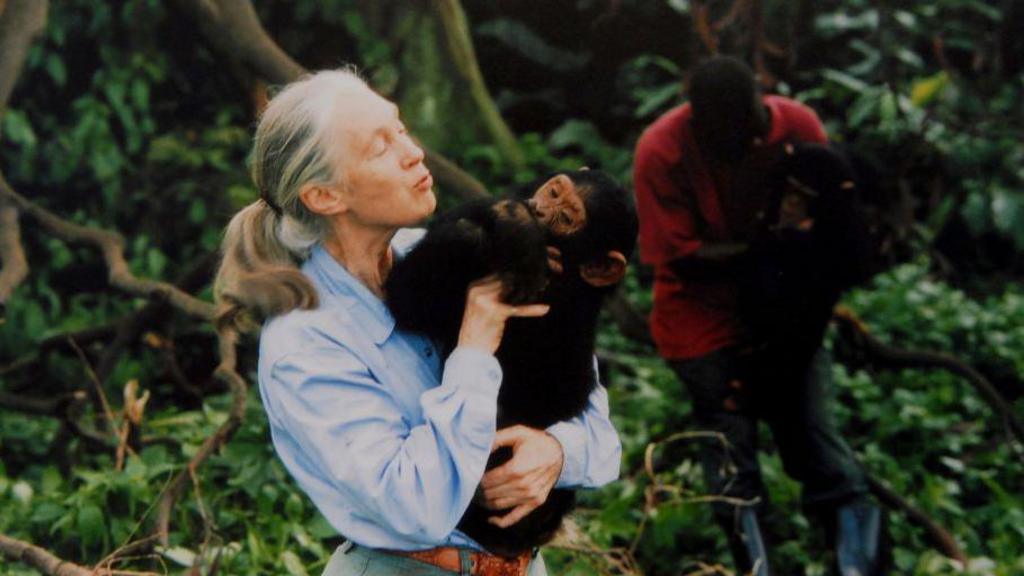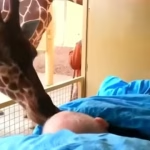David Greybeard: The Chimpanzee Who Bridged the Gap Between Humans and Chimps

David Greybeard: The Chimpanzee Who Bridged the Gap Between Humans and Chimps
When Jane Goodall arrived in the lush forests of Gombe in 1960, she stepped into a world that was entirely foreign — a wild world where the chimpanzees she sought to study were both elusive and wary of human presence. For the first few months, they kept their distance, retreating into the forest whenever she appeared. However, a pivotal moment in her career and in the study of chimpanzees was about to unfold — and it came in the form of one chimpanzee who would change everything: David Greybeard.
David Greybeard: The First to Trust
David Greybeard was an elderly chimpanzee with a distinguished silvery beard, and he was the first to bridge the gap between human and chimpanzee. His presence marked a transformative shift in Goodall’s research. Unlike the other chimps, who instinctively feared Jane, David approached her camp with quiet curiosity. He sat nearby, calmly accepting her presence, and in doing so, he allowed Goodall her first real opportunity to observe chimpanzee behavior up close.
As Jane spent more time in the company of David, he became her guide to the chimpanzee world. He was patient, gentle, and, perhaps most remarkably, willing to trust. His willingness to coexist with her marked the beginning of a groundbreaking journey into the lives of these fascinating creatures.
The Groundbreaking Discovery: Tool Use
One of the most defining moments of Jane Goodall’s early years at Gombe came when she witnessed something that would rewrite the understanding of chimpanzees forever. One day, while observing David, she saw him pick up a twig from the ground, strip off its leaves, and carefully insert it into a termite mound. As he pulled it out, the twig was covered in termites, which David then ate. The act of using a tool to gather food — a behavior once thought to be uniquely human — was now observed in a non-human primate.
This discovery was monumental. It not only challenged the long-held belief that tool use was a hallmark of human intelligence but also provided compelling evidence that chimpanzees, like humans, possess the ability to create and use tools to solve problems. It became a cornerstone of Goodall’s work, highlighting the remarkable cognitive and social abilities of chimpanzees.
A Deeper Understanding: Friendship, Empathy, and Society
Beyond his role in Goodall’s scientific research, David Greybeard was also a symbol of the complex emotional lives of chimpanzees. Through his interactions with Jane and the other chimps, Goodall began to see the deeper, often hidden layers of chimpanzee life — their capacity for friendship, empathy, and even anger. David, with his quiet wisdom, helped Goodall realize that chimpanzees were not so different from humans after all.
David also served as a bridge to the other chimpanzees in the area. As he came to trust Jane, other chimpanzees began to approach her camp out of curiosity, eager to investigate this strange human who was not so frightening after all. It was through David that Goodall was able to study the full range of chimpanzee behavior — from playful interactions to moments of intense conflict — and gain insight into the intricate social fabric of their society.
David’s Legacy: The Enduring Impact
David Greybeard’s death in 1968, following a pneumonia outbreak, marked the end of an era for Jane Goodall. He had been her closest companion in the chimpanzee world, and his passing left a profound mark on her. Yet, David’s legacy lives on, not only through the scientific discoveries that emerged from Goodall’s research but also in the profound impact he had on the way the world views chimpanzees.
He helped usher in a new era of understanding about the similarities between humans and our closest animal relatives. Through his interactions with Jane, he proved that chimpanzees are capable of much more than most people realized — from tool use to complex social dynamics — and he paved the way for future generations of scientists to study and protect these remarkable creatures.
In every heart touched by Jane Goodall’s work, David Greybeard’s legacy lives on. His story, and the relationship he formed with Jane, will continue to inspire both scientists and animal lovers alike, reminding us of the power of patience, trust, and empathy in bridging the gap between species.
Conclusion
David Greybeard was more than just a chimpanzee who contributed to scientific discovery. He was a symbol of the connections we can form across boundaries, whether they are between humans and animals, or among individuals of the same species. His presence in Jane Goodall’s early years at Gombe was not just about new scientific data but about reshaping the way we think about other species — and ourselves. Through David, we learned that kindness, curiosity, and trust are universal traits that can bring us closer to understanding the rich emotional and social lives of the creatures we share this world with.











